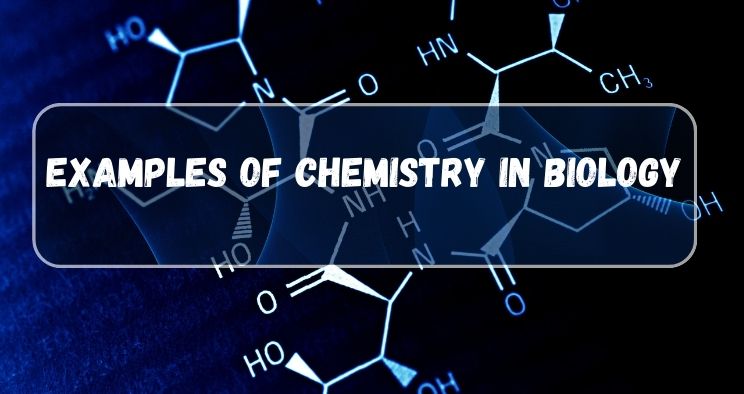Biology and chemistry, often seen as distinct scientific realms, share an intricate dance at the molecular level. In this exploration, we’ll unravel the seamless integration of chemistry into the intricate tapestry of biological processes. From the chemical basis of life to the dance of biomolecules, let’s delve into the fascinating world where these two sciences converge.
Explanation of Relationship b/w Chemistry and Biology
At its core, the marriage of chemistry and biology is encapsulated in the field of biochemistry. Biochemistry elucidates the chemical processes within and related to living organisms, forming the bridge that connects the molecular world with the complexities of life.
Chemical Basis of Life:
The foundation of biology rests upon the elements and compounds that constitute life. Carbon, hydrogen, oxygen, nitrogen, and other elements orchestrate the symphony of life, forming the backbone of biological molecules that shape living organisms.
Biomolecules and Their Chemistry:
Biomolecules—proteins, nucleic acids, carbohydrates, and lipids—are the molecular architects of life. Proteins, with their diverse structures, catalyze biochemical reactions, while nucleic acids encode genetic information. Carbohydrates and lipids, each with unique structures, contribute to cellular structures and energy storage.
Enzymes and Catalysis:
Enzymes, the catalysts of biological reactions, exemplify the marriage of chemistry and biology. From the digestive enzymes breaking down food to the DNA polymerases replicating genetic material, enzymes play a pivotal role in facilitating biochemical processes.
Cellular Respiration and Photosynthesis:
Cellular respiration and photosynthesis showcase the dynamic interplay of chemical processes in energy transformation. The intricate steps of glycolysis, the citric acid cycle, and electron transport chain in cellular respiration, as well as the complex dance of light reactions and the Calvin cycle in photosynthesis, underscore the chemical intricacies of energy conversion.
DNA Structure and Replication:
The double helix of DNA is not just a biological marvel but a testament to the elegance of its chemical structure. DNA replication, an essential biological process, relies on the complementary base pairing and enzymatic activities that exemplify the marriage of chemical precision and biological necessity.
Chemical Signaling and Communication:
From neurotransmitters traversing synapses to hormones orchestrating systemic responses, chemical signaling forms the language of cellular communication. The specificity and selectivity of these chemical messengers highlight the nuanced choreography of chemistry in biological systems.
Examples of Chemistry in Biology
The examples of chemistry in biology with different applications are deeply explained in given below;
Certainly! Here are 20 examples illustrating the profound connection between chemistry and biology with diverse applications:
- Enzymatic Catalysis in Digestion:
- Enzymes like amylase, lipase, and protease break down carbohydrates, fats, and proteins during digestion.
- DNA Replication:
- DNA polymerases facilitate the precise copying of genetic information during cell division.
- ATP as Cellular Energy Currency:
- Adenosine triphosphate (ATP) stores and transfers energy within cells, fueling various biological processes.
- Photosynthesis:
- Chlorophyll, a pigment in plant cells, captures sunlight and converts it into chemical energy during photosynthesis.
- Cellular Respiration:
- Glycolysis, the citric acid cycle, and oxidative phosphorylation involve intricate chemical reactions to extract energy from nutrients.
- Neurotransmitter Signaling:
- Neurotransmitters like serotonin and dopamine transmit signals between nerve cells in the brain, influencing mood and behavior.
- Hormonal Regulation:
- Hormones such as insulin and adrenaline regulate metabolism, blood sugar levels, and the fight-or-flight response.
- Protein Folding:
- The three-dimensional folding of proteins, dictated by chemical interactions, determines their function in the body.
- Antibody-Antigen Interactions:
- Antibodies recognize and bind to specific antigens, forming the basis of the immune response against pathogens.
- Genetic Mutations:
- Chemical alterations to DNA, such as mutations, can influence the development of genetic disorders.
- Cell Membrane Structure:
- Phospholipids and proteins form the structure of cell membranes, regulating the passage of substances in and out of cells.
- Acid-Base Balance in Blood:
- Buffer systems maintain the pH balance in blood, ensuring optimal conditions for enzyme function.
- Osmosis and Cell Turgor Pressure:
- Chemical processes govern the movement of water into and out of cells, influencing cell shape and stability.
- Enzyme-Substrate Specificity:
- Enzymes exhibit specificity in binding to their substrates, ensuring precise biochemical reactions.
- Chemotaxis in Immune Cells:
- Immune cells chemotactically move toward chemical signals released by pathogens during the immune response.
- Antibiotic Action:
- Antibiotics disrupt bacterial cell wall synthesis or protein production, demonstrating the selective toxicity of chemicals.
- Gene Expression and RNA Synthesis:
- Transcription and translation involve complex chemical processes that control gene expression and protein synthesis.
- Chemical Signaling in Plant Growth:
- Plant hormones like auxins and gibberellins regulate growth and development through chemical signaling.
- Blood Clotting Cascade:
- Coagulation factors and platelet activation orchestrate a series of chemical reactions to form blood clots.
- Chemical Analysis in Diagnostics:
- Chemical tests and assays, such as ELISA and PCR, are used in biological research and medical diagnostics.
These examples highlight the diverse ways in which chemistry underpins biological phenomena, showcasing the intricate and indispensable relationship between these two scientific disciplines.
In the grand tapestry of life, chemistry weaves its subtle threads, providing the molecular language that underpins every biological phenomenon. As we unravel the examples of chemistry in biology, we gain a deeper appreciation for the interconnectedness of these two scientific disciplines. It is this harmonious integration that allows us to decipher the molecular symphony playing within every living organism, showcasing the extraordinary unity of biology and chemistry in the dance of life.

